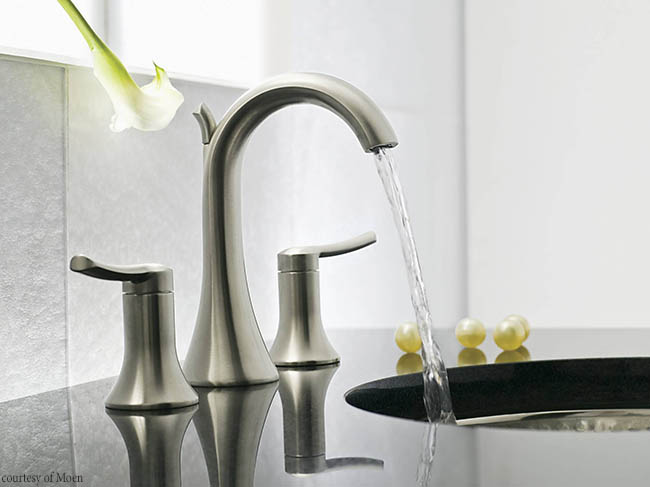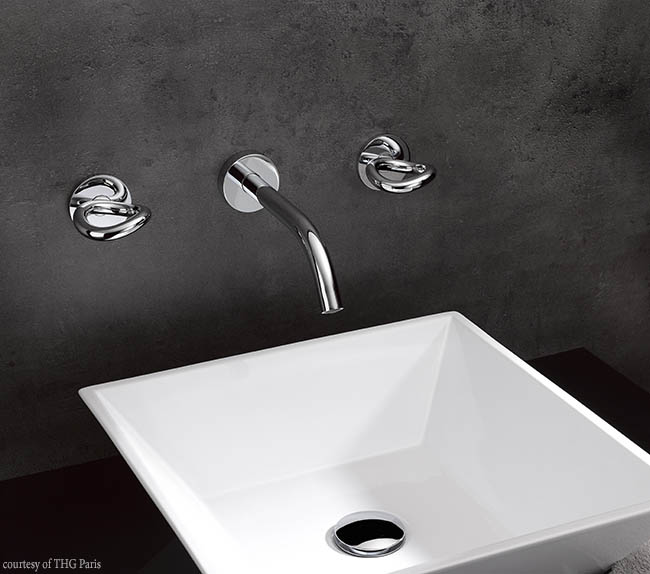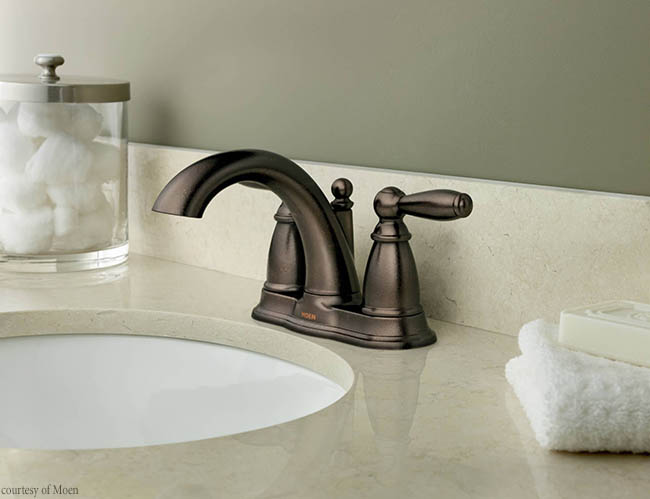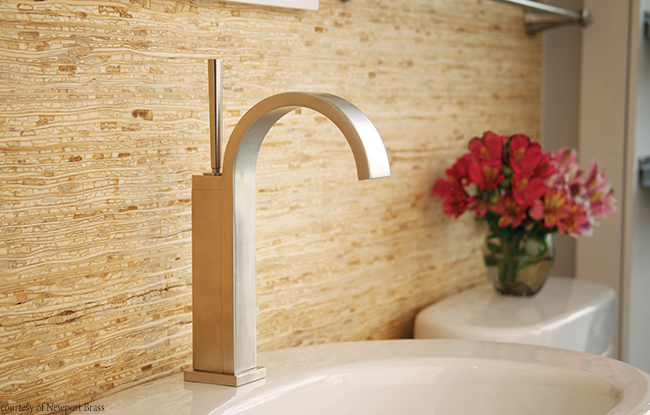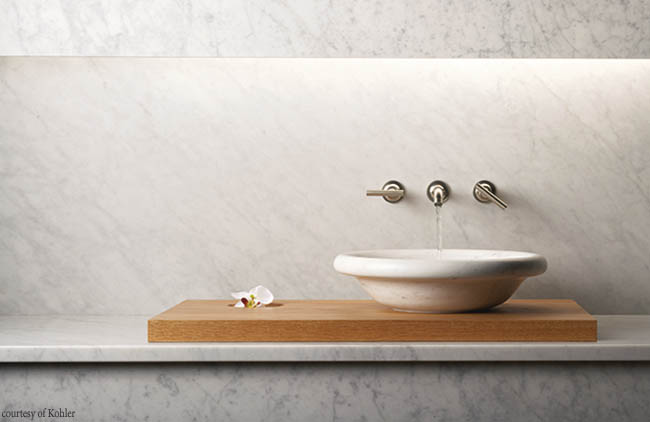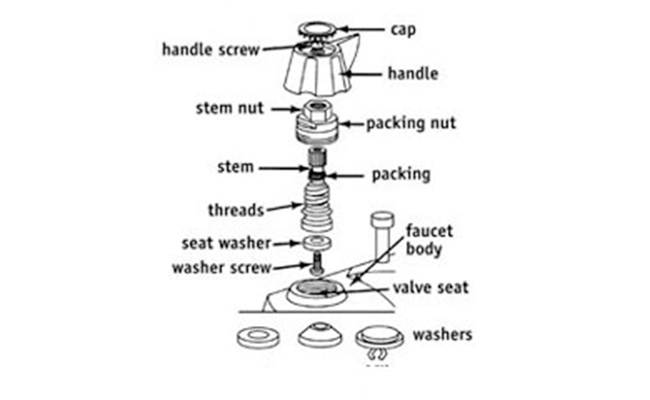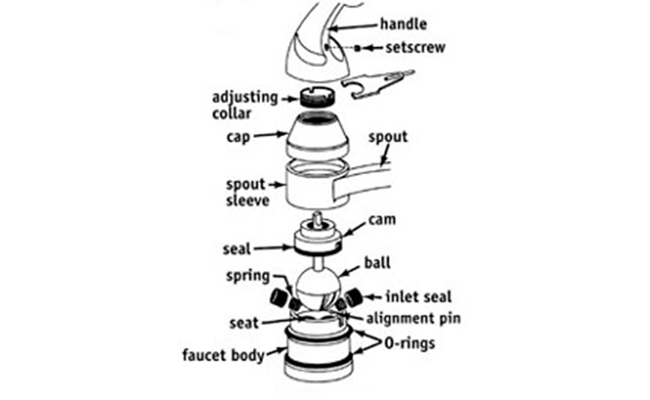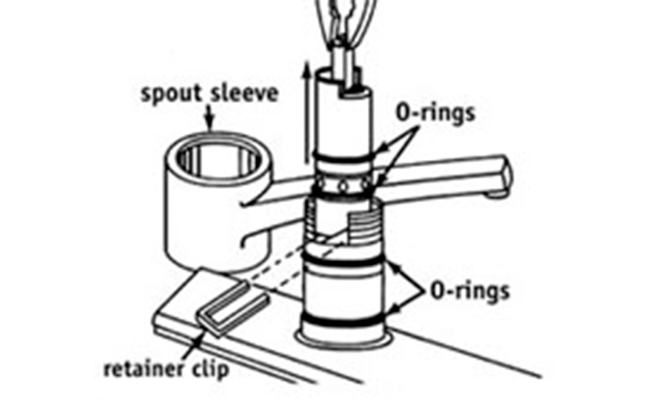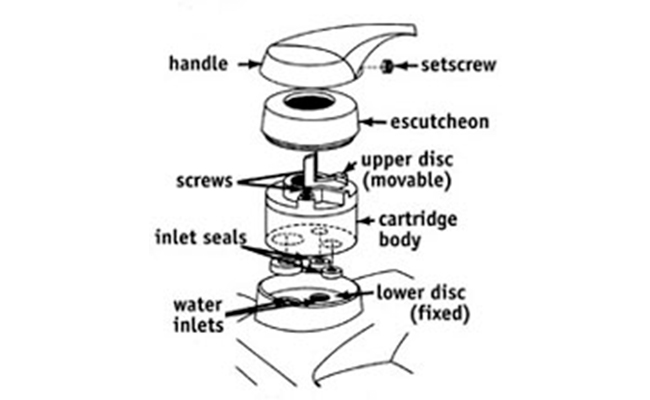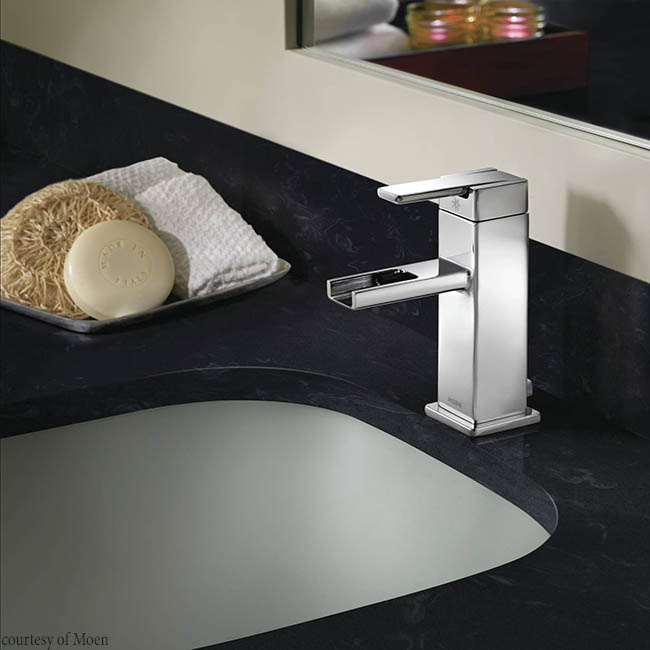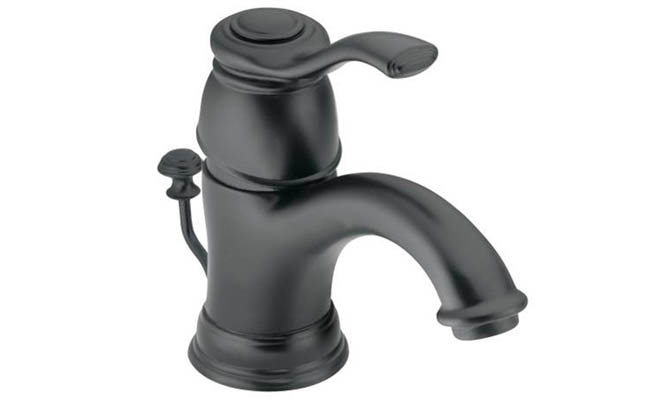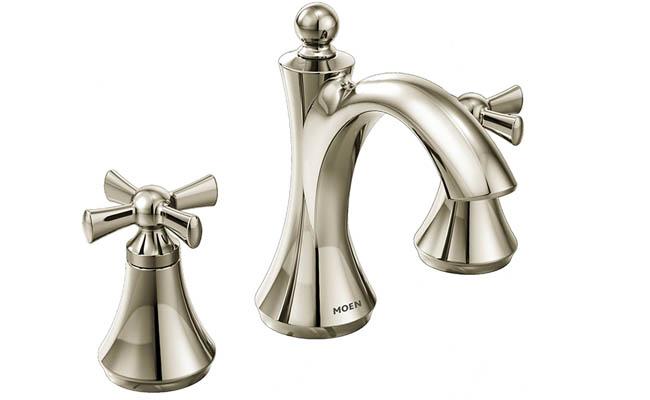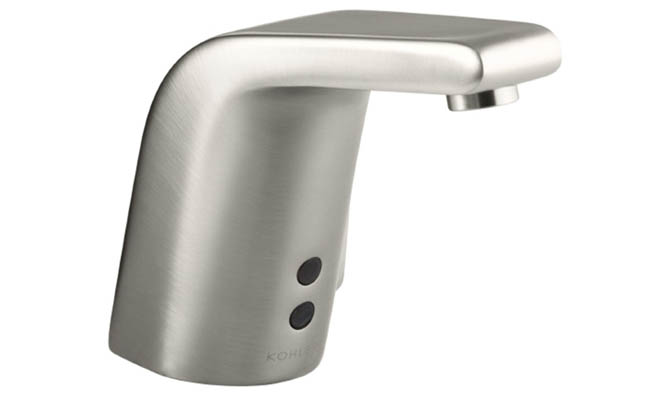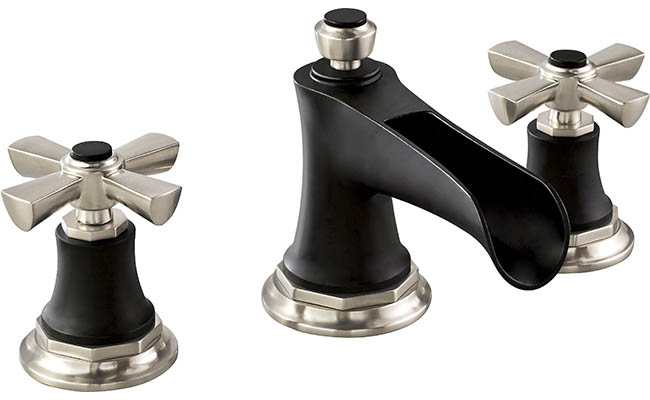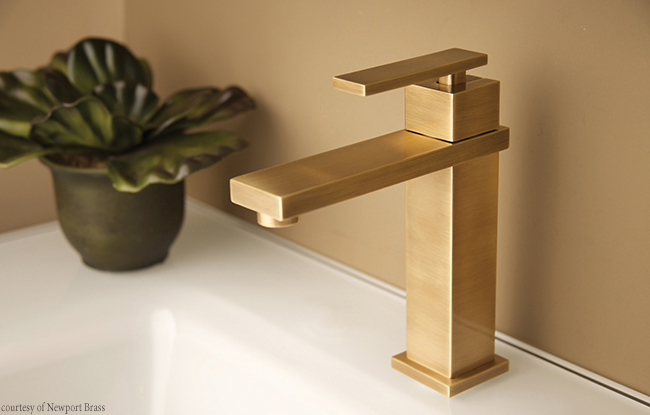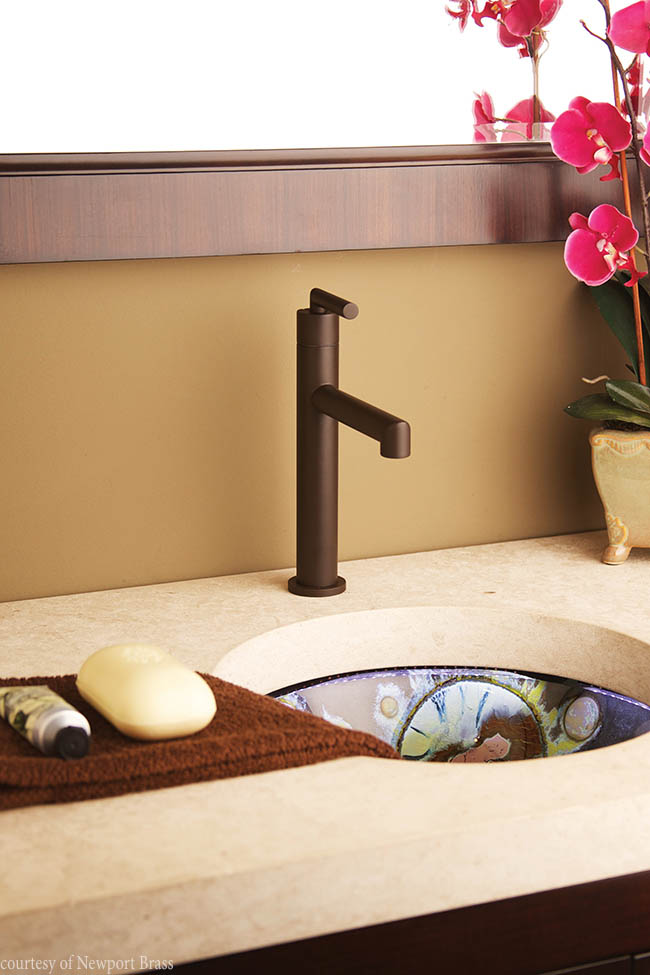Can selecting a faucet for your bathroom sink really be that overwhelming? Yep. Will it be for you? Nope. Here we break down what you need to know about faucet options as simple as one, two and three.
1) Faucet configuration (or mounting type)
Faucet configuration is really just how the faucet is mounted—on the wall or on the sink/countertop, and how many holes it requires in your countertop. If you’re replacing an existing faucet, you will need to purchase a faucet that is the same configuration as the one you’re replacing because the holes in the sink or countertop define the faucet you can use.
Centerset
These faucets have handles that are 4” apart and are made for sinks with three holes. In many cases the handles and spout are combined on a 6” base plate. This configuration works well with small sinks.
Widespread
A widespread faucet has hot and cold water handles that are separate from the spout and at least 6” apart. This type faucet works with 3-hole sinks (two handles and a spout) and the spacing between the handles ranges from 6” to 16”.
Single-hole
A single-hole faucet is one that combines both the spout and the handle and may come as a single lever or two handle product. Since this faucet only requires one hole, if your sink has been predrilled with extra holes, you can use an optional plate with your single-hole faucet to cover them.
Wall-mounted
These faucets are available for above counter and vessel sinks that require a long spout for extended reach to the center of the basin. Because they mount to the wall, they won’t work with basins that have pre-drilled holes. You will need a separate wall-mounted valve and drain for installation.
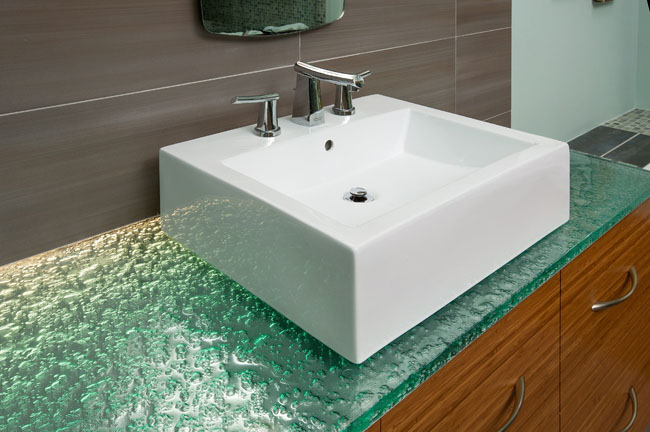
2) Faucet construction
Faucets are constructed with an inner valve through which the flow of water is controlled. The quality of that valve is what determines the durability of the faucet. Typically, faucets with solid brass, brass based metal or corrosion resistant are the best choice. Below are the four types of faucet construction you will see when you select yours.
Compression valve faucet
These are the simplest form of faucet valve and typically have separate hot and cold water handles. The water flow is controlled by the use of a screw-like feature in the handle that compresses a seal that is likely a rubber washer. These valves usually wear the fastest of the valve types. Diagram courtesy of National Retail Hardware Association.
Ball valve faucet
This is a washer-less valve that uses a metal or plastic ball to regulate the amount of water flow. Best options have a metal ball rather than a plastic ball and with only one moving part, the ball valve is less likely to malfunction. Diagram courtesy of National Retail Hardware Association.
Cartridge valve faucet
This faucet uses rubber O-rings inside a cylinder cartridge to regulate water flow. When made with a brass cartridge these faucets are especially reliable. Diagram courtesy of National Retail Hardware Association.
Ceramic disk faucet
Although they are more expensive, ceramic disc faucets are considered the most durable and longest lasting type of faucet. Made with two ceramic discs that move against each other to control block or allow water flow, the seal is watertight because of the nearly flat discs. Diagram courtesy of National Retail Hardware Association.
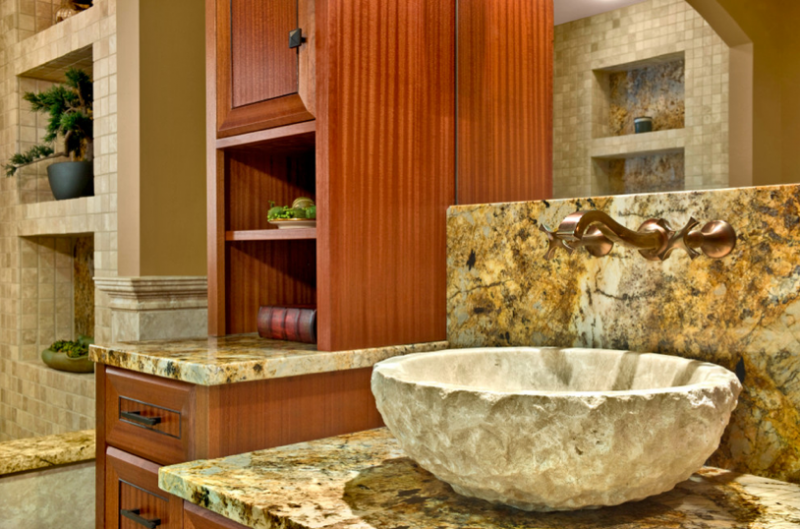
3) Faucet finishes
When considering the finish on your faucet, think about the style of your bath, whether it is contemporary or traditional as well as any other existing finishes with which you may be trying to coordinate. Using the same finish on all the faucets in the same bathroom is a good idea, but don’t feel compelled to use the same finish on all the metals, such as drawer pulls, lighting and towel bars in the bathroom, unless that is easier for you. Using a mix of metals adds dimension and interest. Here are just some of the finishes you may find when shopping faucets and the styles they work best with.
Chrome (matte, brushed or polished)
Contemporary, traditional or transitional.
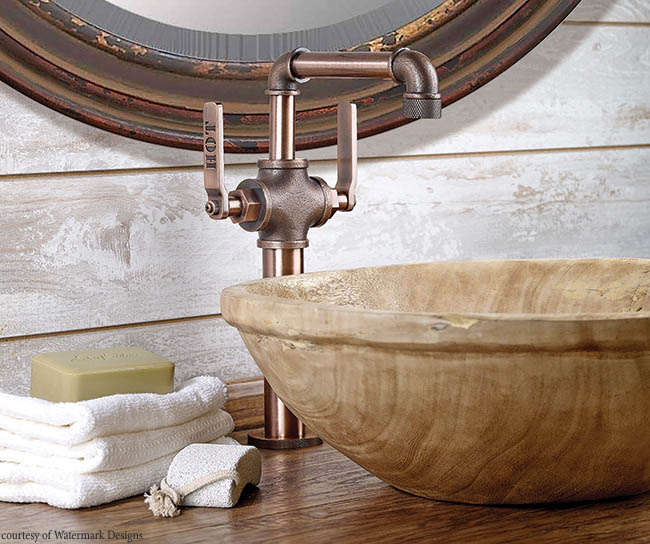
Copper
Rustic, Tuscan or industrial.
Iron
Traditional or rustic.
Nickel (satin, brushed or polished)
Works with every style.
Stainless steel
Works with every style.
Black
Contemporary, Asian or eclectic.
Brass (antique or polished)
This finish is seeing a comeback and works in any style.
Oil rubbed bronze
Traditional, Tuscan or craftsman.

